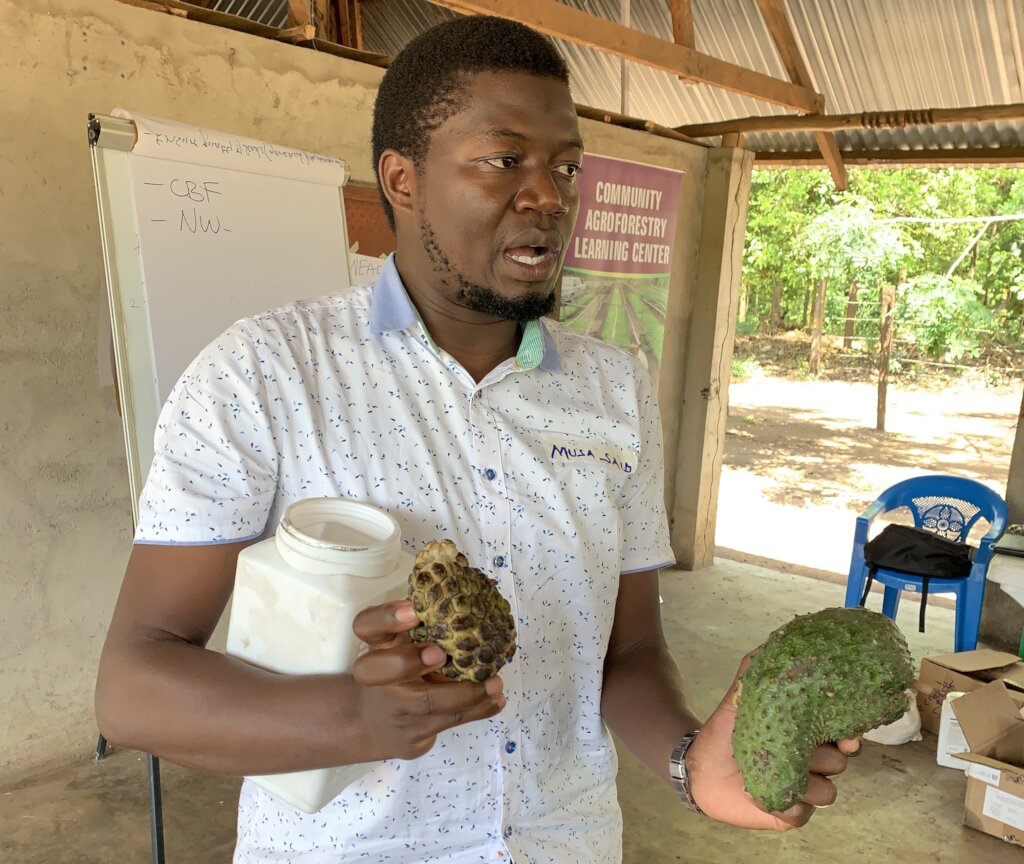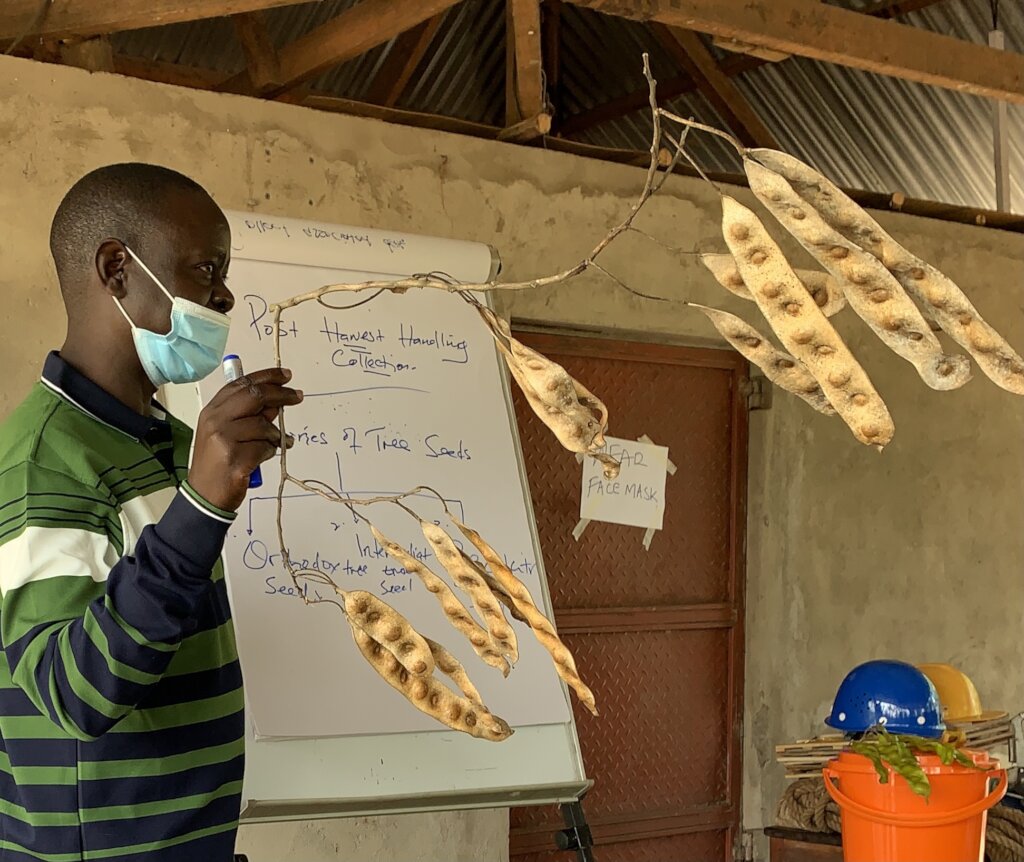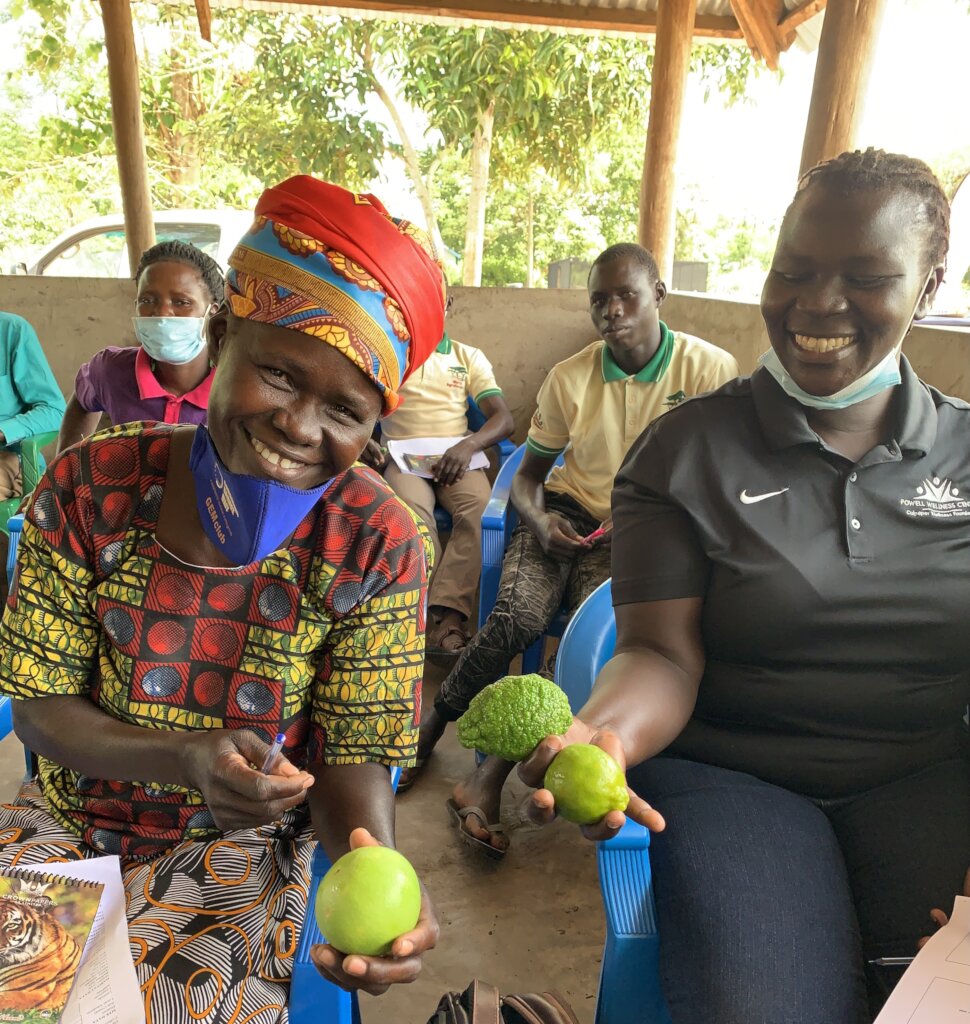By Cathy Watson | Chief of Partnerships
Happy 2022! We hope you are well. For our side, we are! The refugee project is bounding forward for many reasons but particularly thanks to a training on tree seed entirely paid for by you.
Coming none too soon, the training shifted our paradigm and is bringing new species into our nursery and leading to payments to community tree seed collector groups formed out of the training. This for us is win, win, win. We know it is for you too.
The participants were 24 refugees, farmers, NGO staff, and our own nursery workers and communility mobilisers. Our field manager, John Osidi opened the three day training by saying, "Let us not keep what we are learning in books. We are training you to replicate the knowledge and to be entrepreneurs - seed collectors. We can create green jobs and enhance household incomes."
We were privileged to have two lead trainers, both from hundreds of kilometers away. The National Forestry Authority’s Joseph Ochwo, said participants would "learn different methods of seed collection, what determines the method, how to extract different seeds, how to plan a collection, how to check seed quality, and how much seed to collect”.
The veteran forester, who has trained a generation of Ugandans in tree seed, added that “Some trees have seed that are challenging” and launched into terms like “orthodox” and “recalcitrant” seed -- seeds that do and don’t tolerate drying respectively -- which attendees grasped impressively fast.
In his introductory remarks, co-lead trainer Said Mutegeki, plant conservation officer from Tooro Botanical Garden, explained the “why” of the course.
“We want biodiversity maintained in the most stable way. Let’s have seed collector groups close to seed sources. Then they will start attaching value and not looking at native species as a nuisance.”
Mutegeki, who runs a nursery with over 120 species in Western Uganda, got straight into how to work with farmers who have trees that you need to collect from on their land.
"If you explain from the outset why you want to multiply it, most communities are friendly. Seek permission with polite and convincing words so there is no miscommunication, and talk about the goodness of trees.”
He added “And when you have indenitified potential seed sources, protect the area jealously. Someone may set fire to it.”
Expectations for the training were high. "We have come to learn how to build forest systems," said Moses Ebong from Danish Refugee Council. A woman farmer said tree cutting “had tampered with the weather” and asked the trainers to inspect fruit from her trees
Finally, following Ugandan protocol, forester Magnum Tabule from the district forestry office formally launched the workshop. "This training is core, and we have been vying for it for some time. Our nursery operators have been failing."
Dear supporters, let me assure you that our nursery has not been failing. It has led the way in Imvepi and Rhino Camp Refugee settlements in producing indigenous trees as well as useful exotics. But we knew we needed to do better.
For difficult to acquire species like Mvule, we have often sourced seed from the National Tree Seed Center, which typically collects it from outstanding Mvule trees distributed across Eastern Uganda. But what is the implication of carrying seed from eastern to northwestern Uganda? What might this do to our sub-population of this endangered stately hardwood?
Local collection is better. “We need to collect seeds from trees that are adapted to the local ecology,” stressed Ochwo. And preserving local genetic variety is key.
We have also been sourcing seeds for fruit like papaya and jackfruit from market ladies in Arua town. This we might continue. The seed likely comes from all over the district or even region from a large number of mother trees that have been selected for producing the juiciest and sweetest fruit.
But less positively we have been raising some tree species from seed collected from a very small number of mother trees. “Last year we raised all our Albizzia gummifera seedlings from the tree here at our learning center,” admitted one nursery worker.
All this is a thing of the past now. The trainers impressed upon us the need to collect from a multitude of mother trees to maintain and maximize genetic diversity.
Following a curriculum designed by Botanical Gardens Conservation International, which uses the Millennium Seed Bank standard, we were taught to collect from 50 mother trees spaced at least 100 meters apart for each species, and that we should collect no more than 20% of the seed from any one tree.
This is no small challenge. But in communications from the field this week, the team said it had been able to make collections from about 30 mother trees for some of our important species.
The training has paid us back in spades, not just on handling tree seed but also with its focus on growing a sizable range of “native” trees, something the team has struggled with at times.
Answering “Why should we plant native trees?” Mutegeki reeled off, “They are getting depleted, they withstand our soils, they are better adapted, and they have a longer life span than exotics. Also, for genetic pool, shade, and pest control. They support bats, beneficial insects and birds.”
Mutegeki and Ochwo were delighted just this week, when I told them that the team was now monitoring flowers on indigenous trees that would soon set fruit then seed. For the botanists among you, these include Ximenia americana, Sterculia africana, Prosopsis africana, Parinari excelsa, Kigelia africana, Carisa edulis, and the fruit-bearing liana Saba florida.
We really benefitted from this training, which included a day in the forest watching high tree climbing and seed collection from the canopy and pressing tree leaves. We were grateful for a chance to ask basic questions such as “Is it ok to pick seeds from the ground?” The answer from Joseph Ochwo was “ideally not”, because it can introduce seed-boring insects and mold.
In other sound advice, the forester said, "If nothing else, remember that dry seed is the key to good storage. Don't mix seed from different places. And deny the seeds light and moisture. Those things trigger germination”.
Mutegeki’s last words were “Trees are going extinct because people have needs. When we plant them, we are adding a brick”.
Thank you for your support. And if you have read this far, please consider becoming a monthly donor. We push on!
By Cathy Watson | Chief of Partnerships
By Cathy Watson | Chief - Partnerships at CIFOR-ICRAF
Project reports on GlobalGiving are posted directly to globalgiving.org by Project Leaders as they are completed, generally every 3-4 months. To protect the integrity of these documents, GlobalGiving does not alter them; therefore you may find some language or formatting issues.
If you donate to this project or have donated to this project, you can recieve an email when this project posts a report. You can also subscribe for reports without donating.
Support this important cause by creating a personalized fundraising page.
Start a Fundraiser

